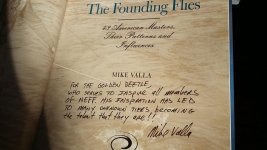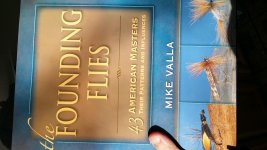golden beetle
Active member
Mike Valla sent out a public invitation to NEFF a few days ago to drop by and say hello at the Fly Tying Symposium.
Mike obviously didn't ask me for advice, because I never in my life would want to be surrounded by losers like we have here asking for autographs....
But in the crowd of folks that asked Mr. Valla to sign his book, there was not one NEFFer.
Why?
I suppose if ya can't read, you don't buy books.
NEFFers show up in face paint and ask for autographs on their chests...
Mike has written another beautiful book.
I now own two of his books, and am proud to be the only NEFFer to own a book.
Of any sort.
Please take a moment to read his kind inscription. It is in block letters to make it easier for you.

Mike obviously didn't ask me for advice, because I never in my life would want to be surrounded by losers like we have here asking for autographs....
But in the crowd of folks that asked Mr. Valla to sign his book, there was not one NEFFer.
Why?
I suppose if ya can't read, you don't buy books.
NEFFers show up in face paint and ask for autographs on their chests...
Mike has written another beautiful book.
I now own two of his books, and am proud to be the only NEFFer to own a book.
Of any sort.
Please take a moment to read his kind inscription. It is in block letters to make it easier for you.

Attachments
Last edited:


